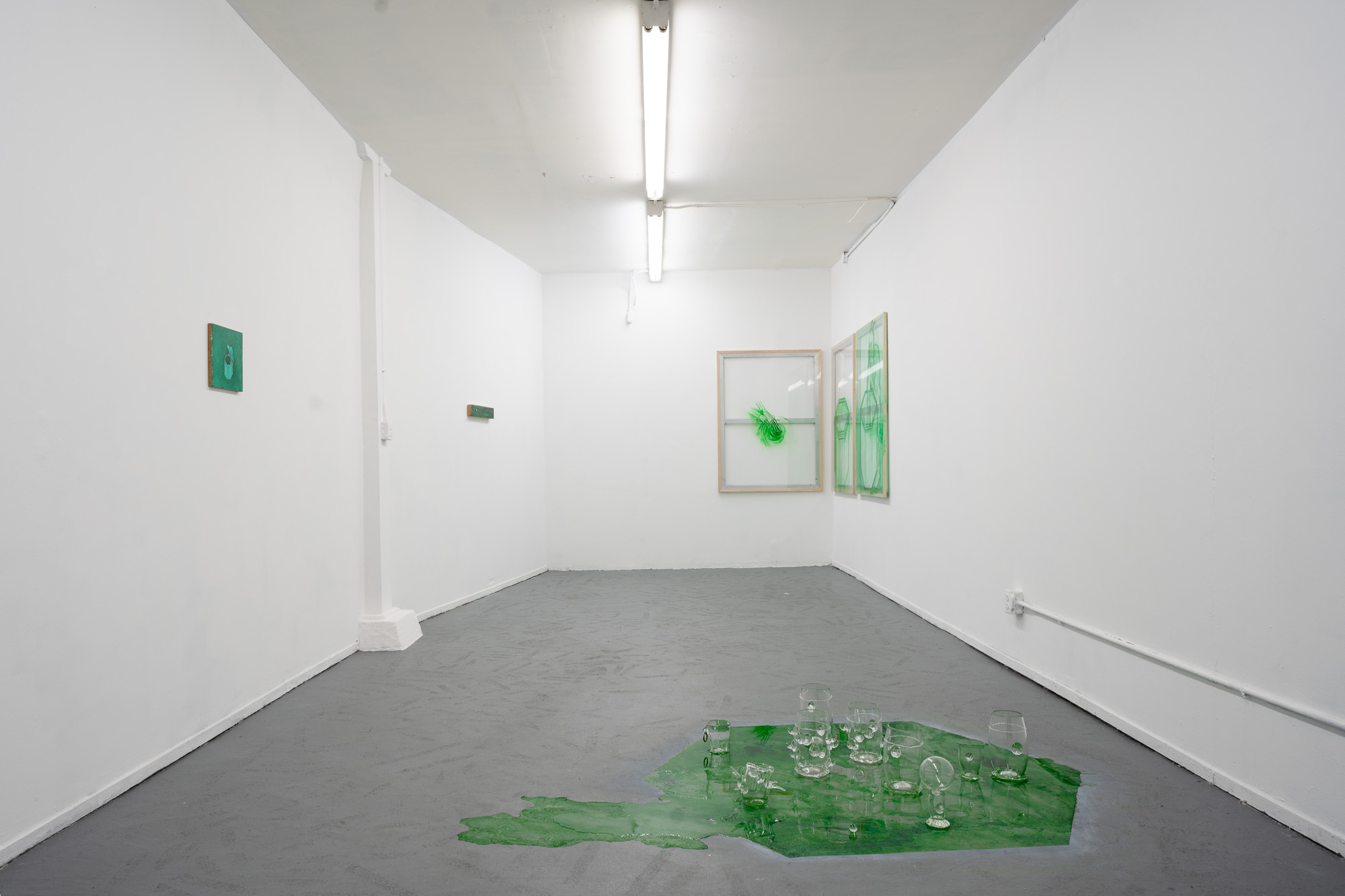Brook Hsu, Conspiracy theory
April 25 - June 1, 2019
_info
Et al. presents
Brook Hsu
Conspiracy theory
April 25 - June 1, 2019
Chinatown, San Francisco
The objects in Brook Hsu’s Conspiracy theory conjure a mysterious religion. They share a deity (the horned figure of Death) and a devotional space (the well or the pond—a body of still water). Brook’s palette of deep green turns each piece into a coordinate in some unknown mythology.
The exhibition consists of small oil paintings on pieces of wood, larger shellac ink paintings on clear plastic, and glass vessels clustered around a green puddle. They feel like relics plucked from a lost basilica. The shapes of Brook’s wood paintings are fit for apses. Her shellac pieces are like stained glass windows; the puddle is like holy water. Conspiracy theory has all the trappings of an apostolic ritual.
Brook’s artworks seem to propose a mystical belief system. Each one uses similar subjects in different iterations, like meditations on a sacred parable. But they arouse an inverted, malignant faith. Where religion tries to establish certainty, Brook’s creed is full of doubt. She uses the idiom of sanctity against itself. In some ways this is obvious: the god of this myth is macabre. Staring down a well or into a pond, he sees no reflection—as if his world were a suspicious figment. Brook’s lush green is at the same time corrosive—like rusting copper or runoff algae (she is quick to mention that her ink is made from the excretions of lac beetles). In more than one painting, Death cries thick shoots of water—or “vomit tears”—into a well. Anointment here turns upside down, plunged out of sight.
A conspiracy theory hovers between a secret order and a false causality. Brook Hsu’s exhibition hovers similarly. Like a grand dogma, these pieces cast an elaborate allegory. But the lesson of this allegory is dubious. The closer we probe, the darker and more uncertain the meaning. Each piece is a votive offering to this precarious theology—one that seeks the same order that it severs.
Zully Adler, April 2019
































